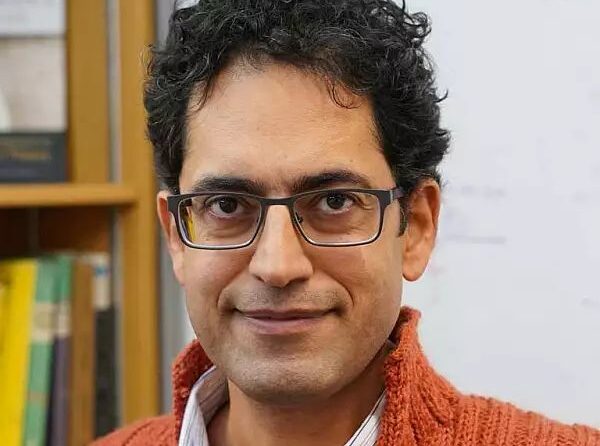A groundbreaking discovery in quantum physics has revealed a novel electronic state in twisted graphene layers, where electrons exhibit the paradoxical behavior of being simultaneously frozen yet capable of conducting current along edges without resistance. This finding, published in Nature by researchers from the University of British Columbia, University of Washington, and Johns Hopkins University, demonstrates how manipulating graphene’s structure can create remarkable quantum effects.
The research centers on a material called twisted bilayer-trilayer graphene, created by stacking ultrathin layers of graphene with precise rotational alignment. Graphene itself consists of carbon atoms arranged in a honeycomb pattern, but when two layers are stacked with a slight twist, they generate a moiré pattern – an interference pattern where carbon atoms align differently across the structure.
This twisted configuration fundamentally transforms electron behavior within the material. As Professor Joshua Folk from UBC’s Physics and Astronomy Department explains, electrons moving through the moiré pattern dramatically slow down and develop a vortex-like motion, similar to water spiraling down a drain. The discovery was made by undergraduate student Ruiheng Su, working with a sample prepared by Dr. Dacen Waters in Professor Matthew Yankowitz’s laboratory.
The most remarkable aspect of this discovery is the unique state achieved by the electrons: they freeze into an ordered array while maintaining a synchronized rotating motion, analogous to ballet dancers performing stationary pirouettes. In this state, the material’s interior becomes insulating due to the immobilized electrons, while current flows freely along its edges.
The precision of this edge current flow is determined by fundamental physical constants – specifically, the ratio between Planck’s constant and the electron’s charge. This precise quantization is protected by topology, a mathematical concept describing properties that remain unchanged under moderate deformation. The researchers draw an analogy to a Möbius strip, which maintains its one-sided nature regardless of how it’s manipulated without tearing.
This topological protection makes the phenomenon particularly robust and distinguishes it from conventional electron crystals. The electron crystal’s ability to conduct electricity along its boundaries while maintaining a frozen internal structure represents a previously unobserved quantum state. This contradiction – conducting edges surrounding an insulating bulk – emerges from the topological nature of the electron crystal’s organization.
The discovery holds significant potential for quantum computing applications. The researchers suggest that combining this topological electron crystal with superconductivity could lead to advances in qubit technology for topological quantum computers. This potential application adds practical significance to what is already a fascinating fundamental physics discovery.
The research showcases how manipulating materials at the quantum level can reveal new states of matter with seemingly contradictory properties. The ability to create and control such states represents a significant advance in our understanding of quantum materials and their potential applications in future technologies. The precise control required to achieve this state – from the careful stacking of graphene layers to the specific conditions needed to observe the effect – demonstrates both the challenges and opportunities in quantum materials research.
This work exemplifies how fundamental research into quantum materials can reveal unexpected phenomena that challenge our understanding of electronic behavior while simultaneously opening new possibilities for technological applications. The discovery of this topological electronic crystal adds to our growing toolkit of quantum states that could form the basis of future quantum technologies.
Reference: “Moiré-driven topological electronic crystals in twisted graphene” by Ruiheng Su, Dacen Waters, Boran Zhou, Kenji Watanabe, Takashi Taniguchi, Ya-Hui Zhang, Matthew Yankowitz and Joshua Folk, 22 January 2025, Nature. DOI: 10.1038/s41586-024-08239-6




